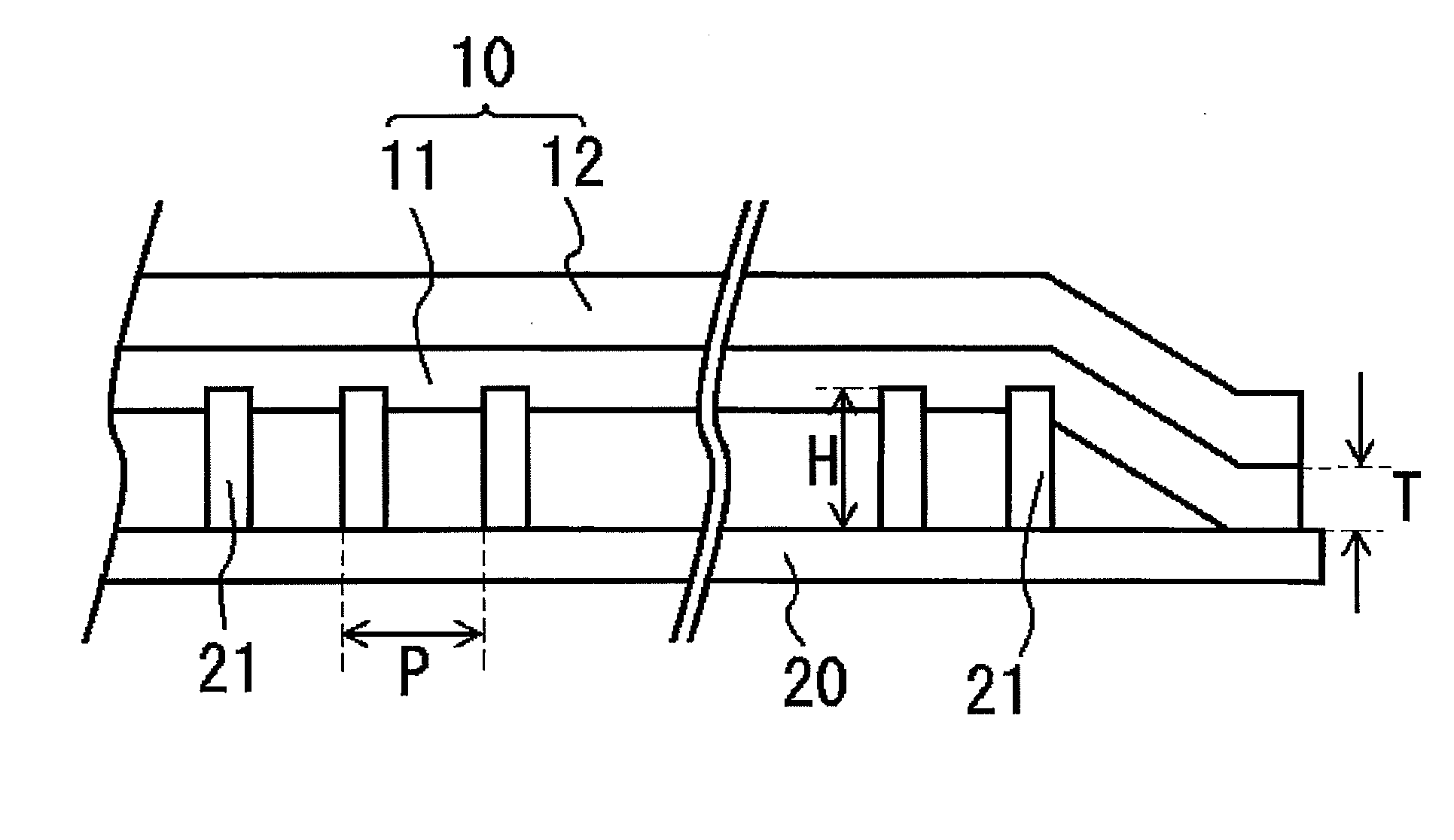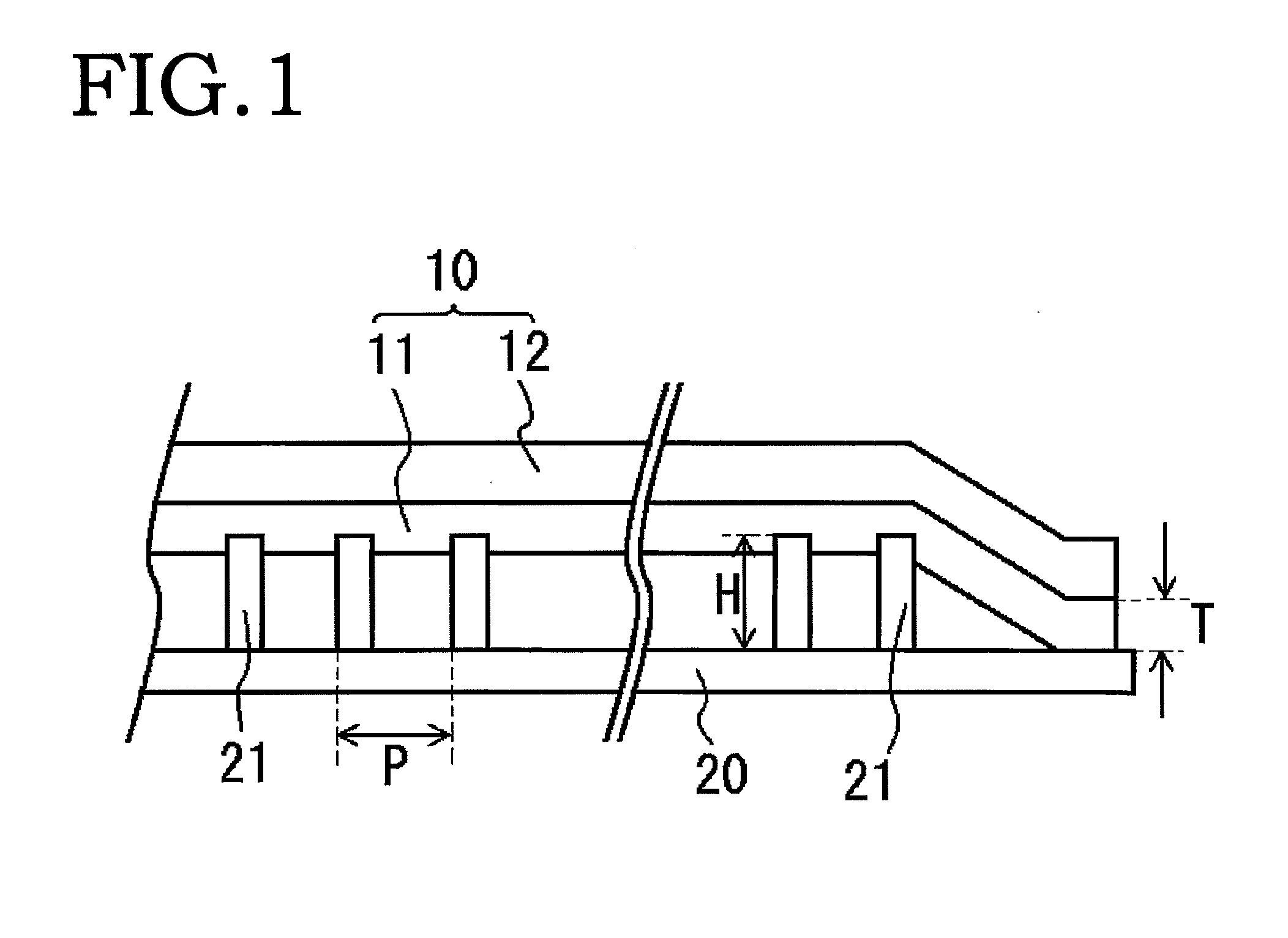Adhesive sheet for supporting and protecting semiconductor wafer and method for grinding back of semiconductor wafer
a technology for supporting and protecting semiconductor wafers, applied in the direction of film/foil adhesives, synthetic resin layered products, transportation and packaging, etc., can solve the problems of grinding debris, grinding water, damage to the pattern surface, etc., and achieve the effect of reducing sticky residue and raising product yield
- Summary
- Abstract
- Description
- Claims
- Application Information
AI Technical Summary
Benefits of technology
Problems solved by technology
Method used
Image
Examples
example 1
[0138]The 115·m-thick ethylene-vinyl acetate copolymer (EVA) film was used as the base film.
[0139]On the base film, the pressure sensitive adhesive layer (15·m-thick) was formed.
[0140]The resin solution was used to coat a 38·m-thick silicone release-treated polyester film so that the thickness of the resulting film became 50·m after drying and was dried for 2 minutes at 140° C. to form a pressure sensitive adhesive layer of the acrylic adhesive 1.
[0141]Thus obtained pressure sensitive adhesive layer was laminated on the base film to form an adhesive sheet for supporting and protecting a semiconductor wafer and the sheet was aged for 1 day or more at 50° C.
[0142]When the adhesive strength of the sheet to the silicon wafer was measured, the result was 12 N / 20 mm.
PUM
| Property | Measurement | Unit |
|---|---|---|
| Temperature | aaaaa | aaaaa |
| Thickness | aaaaa | aaaaa |
| Height | aaaaa | aaaaa |
Abstract
Description
Claims
Application Information
 Login to View More
Login to View More - R&D
- Intellectual Property
- Life Sciences
- Materials
- Tech Scout
- Unparalleled Data Quality
- Higher Quality Content
- 60% Fewer Hallucinations
Browse by: Latest US Patents, China's latest patents, Technical Efficacy Thesaurus, Application Domain, Technology Topic, Popular Technical Reports.
© 2025 PatSnap. All rights reserved.Legal|Privacy policy|Modern Slavery Act Transparency Statement|Sitemap|About US| Contact US: help@patsnap.com


